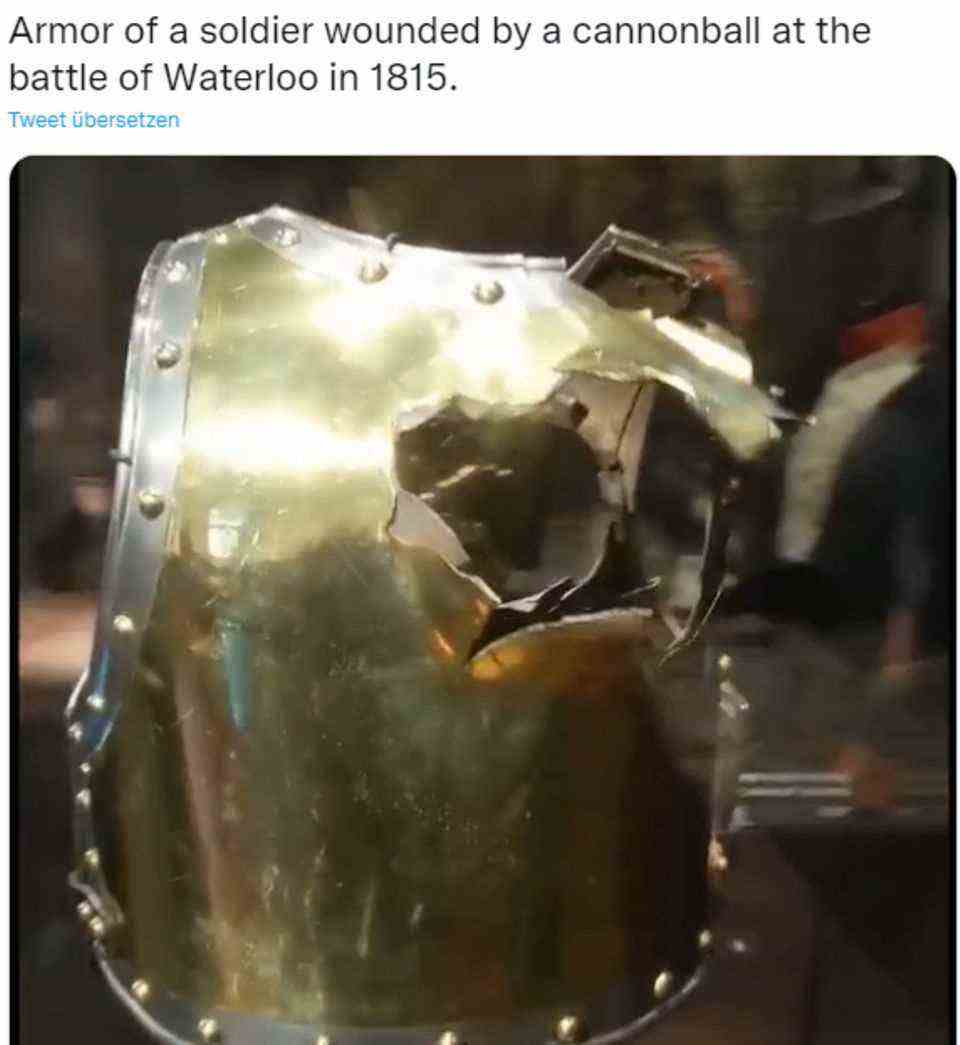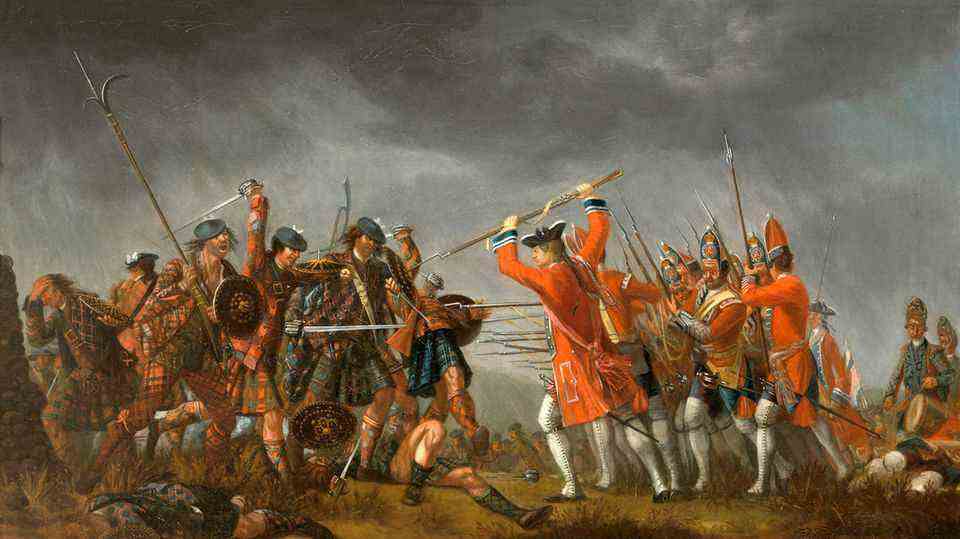Napoleon
Cannonball through the breastplate – this is how a Frenchman died in the Battle of Waterloo
The shot through tank. The painting shows the Carabiniers-à-Cheval in Russia.
© Wikipedia / Commons
The image of a breastplate that has been shot through by a cannonball is circling the web. The story behind it tells of the brave but senseless death of the young Antoine Fauveau.
A thoughtless comment made waves on the net, but the occasion is not very funny. A Twitter user saw a report on the Museum of the Battle of Waterloo. Like every other visitor, she was shocked when she saw one of the macabre “highlights” of the exhibition. The polished breastplate of a French cuirassier who died in Napoleon’s last battle. The special feature is the insertion of a massive cannonball. It tore up the front armor like paper and kicked out in the back.
The text caused a wave
The little video that the user shared was not unusual, her text inadvertently gave the image its explosive power. She typed: “Armor of a soldier wounded by a cannonball at the battle of Waterloo in 1815.” Wounded? And with that the storm broke, everyone who saw the picture thought, “WTF? Injured? What kind of injury is it when a four-inch hole is punched in the chest in the position of the heart?” And every second person remembered the legendary Monty Python duel with the black knight, who gradually loses all limbs and sounds that he will not give up because of a “scratch”.
The video has been viewed millions of times. There was no shortage of other jokes, most of them not very tasteful. That went on until Tony Pollard, a professor in Glasgow, broke his collar. “The exhibit captures the moment of a man’s death. It’s not a joke or a Monty Python sketch about a scratch. It might not be so funny if we knew more about the man and his death.” And Pollard knows a lot to tell.
Carrier is known
Because the dead is known. His name was Antoine Fauveau and he was only 23 years old when he died with saber in hand. He was not one of the veterans who were loyal to the Empereur, he was simply drafted because of the conscription. He wore the tank and the splendid uniform of the 2nd Carabiniers Regiment. An elite formation of Napoleon. When he fell he did honor to his unit, but Fauveau can hardly be called a soldier. He had just been drafted and had seven days of training when he followed General Blancard into battle.

In the famous battle everything that could go wrong went wrong on the French side. Napoleon, who used to be so energetic, let the preparation drag. The wet weather hampered the French artillery, and the cavalry, which Fauveau was one of, suffered from the complexes of their leader, Marshal Ney. He was rightly called the “bravest of the brave”. But when Napoleon had to abdicate and was sent into first exile in Elba, Ney came to terms with the Bourbons, who ascended the throne again. When Napoleon returned, Ney promised Louis XVIII. even to bring Napoleon to Paris like an animal in a cage.
In Waterloo he then served the Corsican again and wanted to make his shame forget. He wanted to force victory by force and ignored orders. In unsuccessful attacks, he wore out his cavalry in skirmishes on the plateau of Mont Saint Jean. The heavy, wet earth made a quick attack by the riders impossible. Infantry and artillery could line up in squares. The cavalry could not break through this formation.
Shortly before the goal
The 800 riders of the 2nd Carabiniers Regiment were Ney’s last reserve. The troops’ morale was bad, and some officers defected in Waterloo. At 6.30 p.m. the 1st and 2nd Carabiniers were to take the ridge behind the Hougoumont farm, the center of the battle. There were 20 cannons there. The Carabiniers made three attacks and were repulsed each time. At close range, Fauveau’s chest was hit by a 9-pounder. A solid sphere made of bronze or iron. Presumably he was hit directly. The usual ricochet shots, in which the ball jumped flat above the ground, did not work because of the damp ground at Waterloo. Although he had received little training, Fauveau had come so close to achieving it. The fall of the defensive position around Hougoumont could have decided the battle. Fauveau had broken through the infantry positions and must have been hit shortly before the cannons.
He died immediately, the impact energy of the heavy bullet triggered a shock, all organs turned to a pulp from the pressure. Only the tank held the body together. His pay book was later found in the lining of the tank. It contained the data of Antoine Fauveau: “Long, freckled face with a large forehead, blue eyes, hooked nose and small mouth”. He was a herdsman and wanted to get married. The tank was found, but not young Fauveau’s grave.
Haunted battlefield
The battle was lost when the attack by Fauveau’s unit collapsed. In a senseless effort, Napoleon sent the Old Guard into battle. But they couldn’t break through the fire either. The veterans made no headway but refused to give up. They preferred to be shot together. When the Old Guard fell, Napoleon’s reign was over.
Alexander Cavalié Mercer describes the eerie battlefield the evening after the battle: “It was a moving feeling to stand in the silence of the night and stare at the battlefield that had been the scene of the battle during the day and was now so calm and still that the actors sprawled on the bloody floor, their pale faces turned to the cold moonbeams reflected off the helmets and breastplates! Every now and then a figure rose on the floor, only to fall down again with new cries of despair. Others straightened slightly and pitifully up or stumbling across the battlefield looking for help. Much of it I followed with my eyes and lost in the distance. But many, alas, fell to the ground after tripping a few steps never to get up . It was shocking! But I watched anyway. “
Source: Tony Pollard / Twitter





